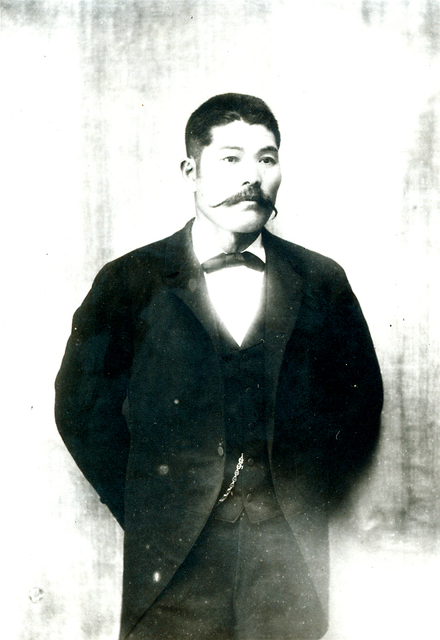Katsu Goto was an early Japanese immigrant who came to Hawaii in 1885 aboard the SS City of Tokio, the first steamship of the kanyaku imin (contract laborers) to work on the sugar plantations in Hawaii. ADVERTISING Katsu Goto was
Katsu Goto was an early Japanese immigrant who came to Hawaii in 1885 aboard the SS City of Tokio, the first steamship of the kanyaku imin (contract laborers) to work on the sugar plantations in Hawaii.
After enduring a three-year labor contract at Soper, Wright & Co. along the Hamakua Coast, Goto became a successful businessman and labor leader, but he was killed via a lynching in Honokaa in 1889 while helping Japanese sugar plantation workers.
Presented by the Katsu Goto Memorial Committee of the Honokaa Hongwanji Mission, “Bringing the Legacy of Katsu Goto to Life” is the first documentary film of his story. The Nippon Golden Network (Oceanic Time Warner Channel 677) will air a special 25-minute preview of the film with a behind-the-scenes look at the making of the documentary and information about the fundraising campaign to capture his story on film.
The preview will run four times:
• 9:35 p.m. and midnight Saturday, Jan. 2, 2016
• 6 a.m. and 3:15 p.m. Sunday, Jan. 3, 2016
The previews are airing during the Nippon Golden Network’s “Freeview” period (Dec. 30-Jan. 3) when NGN will be available for free to all Oceanic subscribers in the state. Interviews will be captioned for Japanese and English speakers.
In the preview, viewers will experience interviews with Goto’s descendants, academic and historical scholars, community members and the film’s production team.
“As a film director, you look for those really beautiful stories that come together to make a movie and I think we really have those powerful stories in this film,” said director and editor Danny Miller.
“We still have new immigrants coming to Hawaii all the time so it is important for us to remember our history so we do not repeat some of the mistakes we have made in the past,” said Baron Sekiya, producer and writer.
It was Goto’s knowledge of the English language and Western laws that thrust him into his role as a bridge between Japanese contract laborers and plantation management as he fought for workers’ rights.
“I feel that my life is in danger by being here … but I am not afraid,” Goto said while meeting Japanese laborers accused by plantation management of arson of a cane field, according to court documents. Goto was ambushed then lynched from a telephone pole in Honokaa after this late night meeting.
Goto’s death in 1889 at 27 was tragic, but his legacy didn’t end there. Dr. Fumiko Kaya, Goto’s niece and a survivor of the bombing of Hiroshima, learned about the lynching of her uncle in 1985. Kaya turned the tragedy into the Goto of Hiroshima Foundation in 1993 to benefit Hawaii scholars and improve cross-cultural communication. The foundation continues today through the University of Hawaii at Manoa’s American Studies Department.
The KGMC is seeking individual, foundation, corporate or organizational sponsors to provide production and completion funds.
“His story has become a legacy,” said executive producer and writer Patsy Iwasaki. “It’s a Hawaii story, it’s an immigrant story, it’s a national story, it’s a story that needs to be told.”
For more information, email Iwasaki at patsy@KatsuGotoMovie.org.
The KGMC was created under the fiscal sponsorship of the Honokaa Hongwanji Mission, an affiliate of the nonprofit Honpa Hongwanji Mission of Hawaii. To make a tax-deductible contribution to the Katsu Goto film project, make checks payable to: Katsu Goto Memorial Committee, c/o Honokaa Hongwanji Mission, P.O. Box 1667, Honokaa, HI 96727, or make a contribution online via Paypal at KatsuGotoMovie.org



